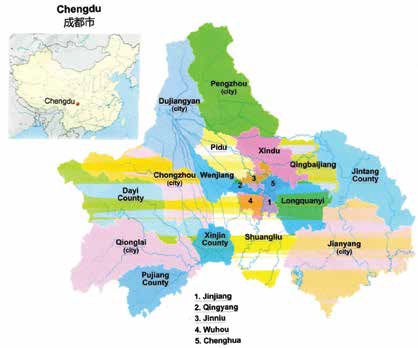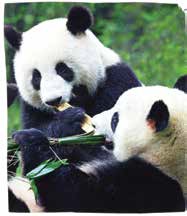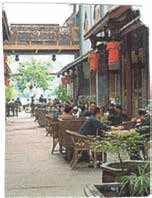|
Read 12959170 times
Connect me to:
|
Chengdu: Capital of the Sichuan Province
Summer Volume: 2019 Issue: 26(2) pages: 29 to 30
Also transcribed as Chengtu and known as Xijing,
but that was in the 17th century, this is a most
populous city in Western China, the fifth largest in
population, and according to a recent census, has more
than ten million people. Called the ‘’Land of
Milk and Honey”
or the ‘Country of
Heaven,’ Chengdu
was China’s capital
during the Three
Kingdom’s Era
(220 - 280 CE).
Now and during
the Middle Ages it
was an important
commercial ,
economic, and
financial city that
was established
in 311 BCE. Its
metro and urban
areas now each
has one thousand
seven hundred
sixty square miles
with a population
of more than
fourteen million
each counting prefectures and sub-provincial parts of its
city. Home to the Sanxingdui and Jinsha archeological
sites inhabited more than four thousand years ago, both
are worth visiting. 
Chengdu, today, has one of the world’s busiest airports, is
an Air China hub, and it has a very busy railway station.
This city is home to a dozen consular offices, has almost
three hundred Fortune 500 company offices, and is
known as the Gingko biloba city or the Hibiscus City. Many do not know it was the first in the world to
introduce paper money. Nor do they know that during
the 1300s, Marco Polo visited and wrote about it. He
even said that tobacco was produced here, the city
and surrounding area the center of cigar and cigarette
production when he went there. It is a planned city, one
goal of its founders, that every citizen have only a two-minute
walk to the nearest park. The home of Du Fu, a poetry sage, and of Chuan opera, this
city is known for its magical masks, its Shu embroidery,
its Sichuan cuisine, and of course its endangered giant
pandas. With lots of fresh water from the Minjiang
River rushing down the Minshan Mountain, it no longer
is prone to flooding as it was before Emperor Li Bing
started a many year project to carve though the Yulei
Mountain building
the much needed
irrigation system
called Dujiangyan.
That now controls
the flooding and
divides the water
to alleviate the
horrible floods
of the past. This
massive project is
still functioning,
and is a UNESCO
World Heritage site
worth visiting. In 1869, a French
missionary, Armand
David. found a black
and white animal
he thought was a
bear; but it was
not. Fossils found
since tell us it was
a giant panda first
appearing on earth some two or three million years
ago. As we did, you can see them at the Giant Panda
Research Station established in 1987 that is some five
and a half miles from downtown Chengdu. Go see them,
and visit one of the many tea houses as locals do. They
are symbols of this
city, as is the bamboo
that feeds the pandas. 
This city was a
cradle of Taoism,
with three important
monasteries, the Cheng
Daci, Wenshu, and
Baoguang, and its many
historic temples. All are
wonderful reminders
that it was important
for thousands of years,
and still is. Probably all
local Chinese know about
Chengdu as they probably
read a most famous novel.
The Romance of The Three
Kingdoms when they were
students in school; it takes
place there. Food is popular here,
Shanghebang Cuisine,
is a variation of Sichuan
cuisine. It is lighter in
taste and the most loved of
all foods in this province.
Here, the shops are popular, too, as they were in the past
when it was the Shu Kingdom. They still are today, and
that was clear they were not only popular but upscale
and sophisticated. Their windows showed gorgeous
clothes, and when we walked its streets this past year,
the windows showing them off were sophisticated and
beautiful. They are more sophisticated than any other
city except perhaps the windows in Beijing. 
There is a Sichuan Cuisine Museum in the Pidu District
with a very tasty food court. Do visit it and meander
in the Qingyang District where the Kuanzhai Alley has
wonderful narrow streets. Also get to the New Century
Global Centre, it is the world’s largest building, floor
space wise. It has many retail outlets, a theater, a
cinema, many offices, a fancy hotel, and a water park,
too. Be amazed at its fifteen thousand parking spaces,
its skating rink, huge picture screen, an artificial beech
with waves, and the Mediterranean village housing all
of them. Chengdu has lots to see, do so in a leisurely
manner, and have tea a few times, too. |




